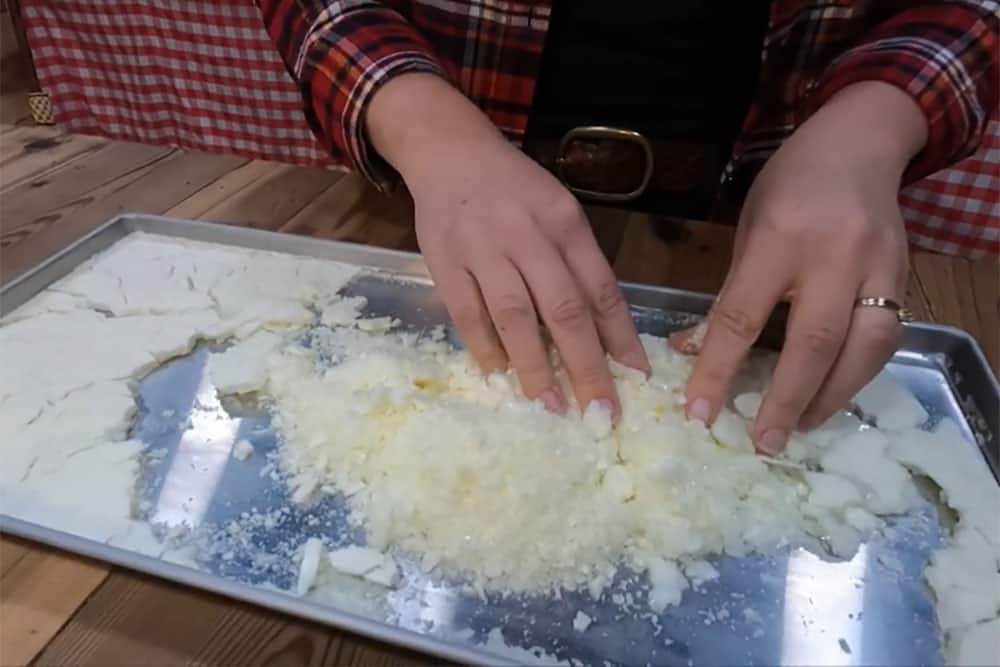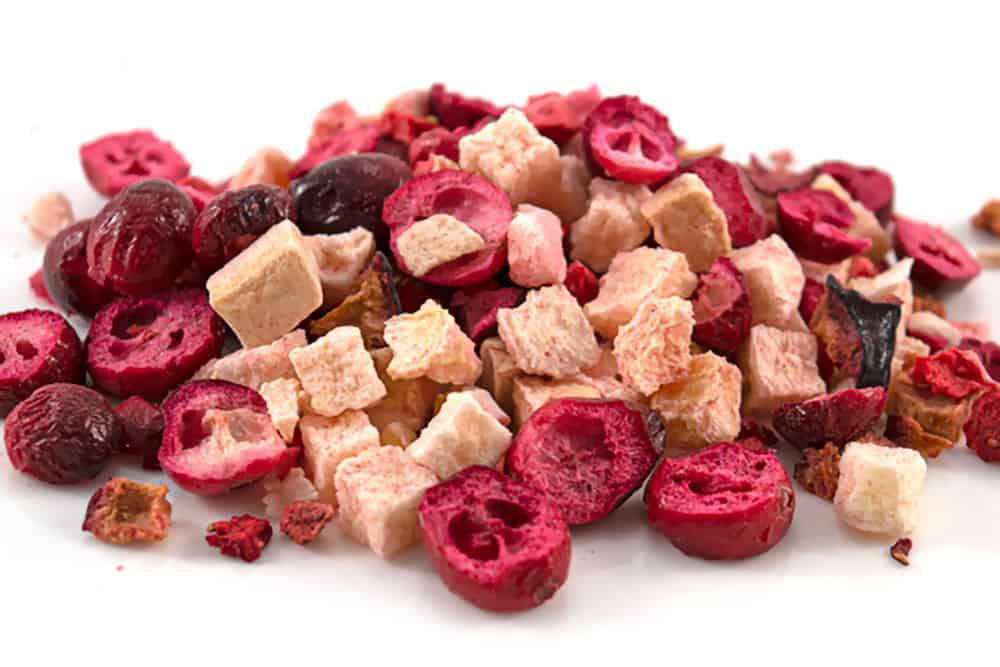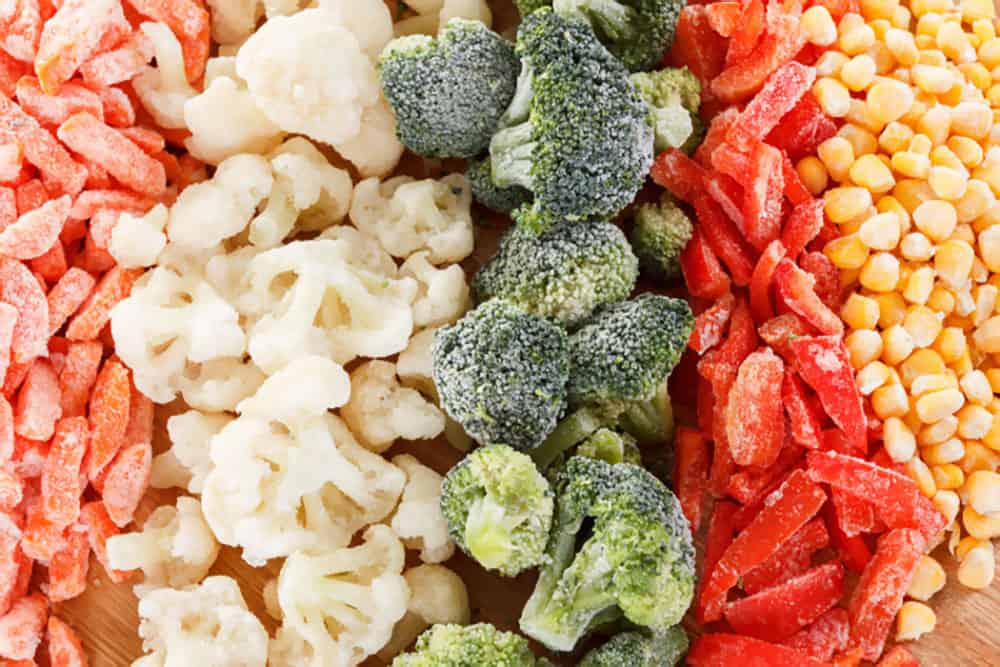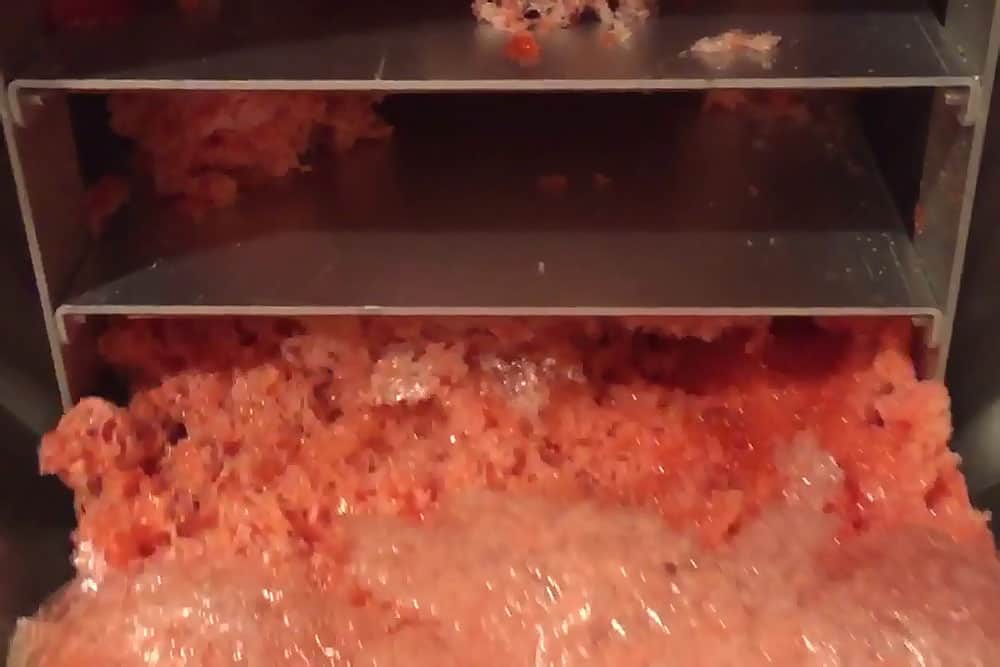Freeze drying of food as we know it has been around for more than a century. The process, also known as lyophilisation, involves freezing an item of food, lowering the pressure inside the freezing chamber, and then removing the resulting ice through the process of sublimation (1).
The taste and quality of the reconstituted item is typically better than that of dehydrated food, due to the freezing process. Some freeze dried foods can last more than 20 years and, if stored properly, retain most of their nutrients during that time.
If events of the past couple of years have convinced you of the practical need to stockpile food freeze drying is one of the best ways to do so.
Foods That are Good Candidates for Freeze Drying
A surprising number of foods are good candidates for freeze drying. Below we’re going to look at a representative sampling of common foods and whether they can be freeze dried.
Bread
Man does not live by bread alone but it’s nonetheless one of life’s staple foods. The good news is that bread can be easily freeze dried and it’s one of the easiest foods to rehydrate into something like its original state.
Sliced bread is maybe the easiest to both freeze dry and reconstitute. Freeze dried bread sliced properly stored will last more than 20 years. When the time comes to put them to use all you have to do is wrap each slice in a damp paper towel and it will absorb the moisture from the paper towel and return to its original form and pretty close to its original texture.
Meat
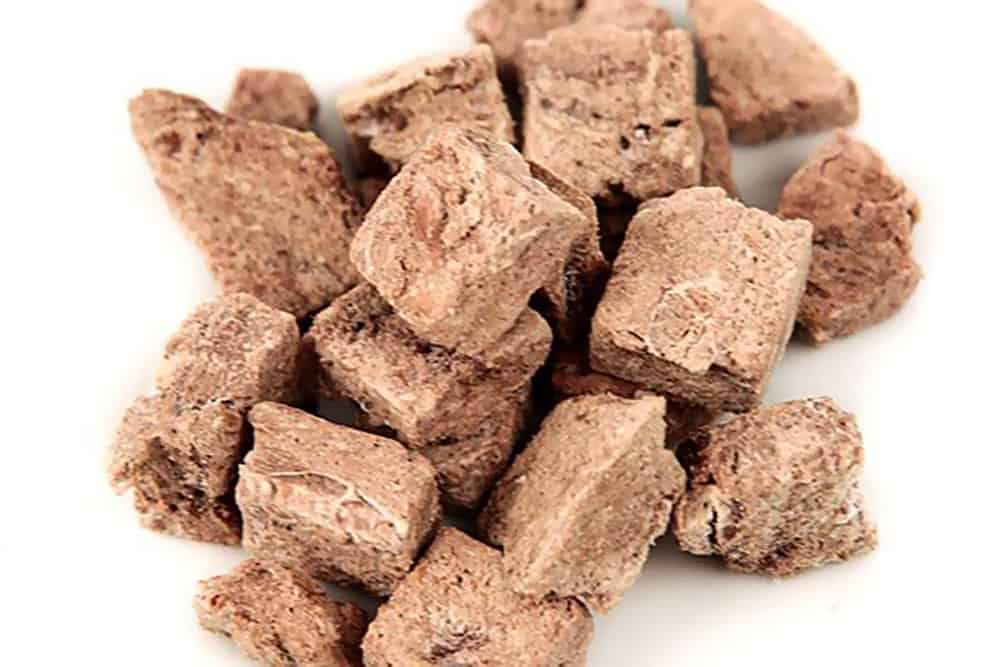
Beef – Beef is relatively easy to freeze dry, as long as it is cut up into modest pieces. Modest meaning no bigger than you might put into beef stew. Full size steaks are just not going to reconstitute in a way that will taste good. Instead they’ll be rubbery and lose a lot of their flavor. Also, make sure your beef is lean. High fat content is going to negatively affect flavor when reconstituted too.
Chicken – Chicken handles freeze-drying pretty well, especially if it is cut into thin slices. This is true whether the chicken is raw or cooked. Also, if you have purchased or created a rotisserie chicken you can cut it into pieces (as long as they’re not very thick) and freeze dry it. It will retain a lot of its flavor. Chicken patties also handle freeze-drying well.
Pork – Like beef, pork will freeze dry without much trouble as long as you’re not trying to freeze dry pork chops. Make sure the pork is lean and cut into shish-kebab or stew size chunks. Or slice your chops up, but not too thin. Typically 1/8 to 1/4 inch thick.
Game meat – If you are a hunter you can slice, dice or chop you quarry up into stew-sized chunks freeze dry it. Most game meat actually holds up pretty well. Again, the key is making sure the pieces are not too big.
Ground meat – Ground meat is great for freeze drying and using later. We would, however, suggest that you cook it first in order to eliminate some of the fat. That will make it easier to freeze dry and it will last longer. Reconstituted ground meat can really transform your chilis, stews and soups into something hearty and delicious.
Jerkies – For some reason a lot of people want to know if they can freeze jerky (2). The short answer it, you can, but why would you want to? If the jerky was made right it should need to be freeze dried.
Meats That Can be Troublesome to Freeze Dry
Bacon (too fatty), deli meats (either too fatty or too thinly sliced) and large sausages (both too fatty and too big) will likely give you fits if you try and freeze dry them. There are those who say it can be done, but we wouldn’t recommend it unless you have bacon, deli meats or sausages to waste, because it will likely take a lot of experimenting. Even then it might not work. In market for a Freeze Dryer? Check out our article on Best Freeze Dryers.
Final Thoughts on Freeze Drying Meats
Most meats will freeze dry just fine but as we’ve noted the more fat in the meat the shorter the shelf life and the greater the odds it will go bad before you use it. Also, don’t mix meat chunks with with fruits and vegetables as the taste of all items will be compromised, and if there was any bacteria on meat that was cooked before being freeze dried it might get into the veggies or other food. Also, it bears repeating that you shouldn’t try to freeze dry full steaks, pork chops or sausages. They simply won’t reconstitute in a worthwhile way. Instead, cut them up into small pieces. The smaller the better actually.
Dairy Products
Milk – Dehydrated milk is a popular item for emergency food stockpiles, but if you have a freeze dryer available you can just freeze dry some milk. Most people who have had both will attest to freeze dried milk having better flavor when reconstituted.
Cheese – Cheese is another dairy item that will freeze dry with relative ease and, because of its versatility, will really come in handy should you need to access the emergency food stockpile. You need to be a little choosey about the cheeses you freeze dry though because soft cheeses tend to reconstitute in a dry-ish, crumbly form. So stick to hard or semi-hard cheeses such as cheddar, colby, monterey jack and mozzarella.
Eggs – Since they have been largely cleared of false charges that they’ll cause heart attacks, eggs have found renewed acclaim as a kind of super-food. Eggs contain an array of nutrients (3), including vitamins D, E, B6 and B12 as well as calcium, zinc and all-important protein.
The best way to store eggs is to scramble them first. You can either leave them in a raw scrambled state or scramble and cook them before freeze-drying them. Either way they’ll make a great addition to your emergency food supply because you’ll be able to use them in all sorts of dishes as well as in baking recipes, (if you happen to have an oven available when you tap into your freeze-dried stockpile).
Yogurt – Yogurt will freeze dry effectively, but don’t expect it to return to its former texture or consistency once you reanimate it. If you’re into adding yogurt to other recipes though, such as pancakes or even smoothies, freeze dried yogurt might be something to consider.
Fruit
Here are some fruits that are good candidates for freeze drying.
Raspberries, blueberries and blackberries – You can freeze dry either the fresh or frozen variety of these fruits. Once freeze-dried a lot of people like to powder them by placing them in the blender and then storing them that way.
Lemons and limes – All you have to do with these is slice them up before freeze drying them. They should go through the process quickly and effectively and reconstitute fine.
Apples – Apples will freeze dry just fine but may not look exactly as you remember once reconstituted. You can however, soak them in water until they’re rehydrated, then bake them into a pie. Or make applesauce and then freeze dry that. It will reconstitute just fine.
Pineapples and watermelons – Because both of these fruits are extremely juicy you may have to submit them to a long freeze dry cycle. You might be able to shorten that cycle by freezing them before putting them in the freeze dryer.
Vegetables
There are so many different kinds of vegetables (4) that we don’t have the space here to go through all of them. So we’re going to divide veggies up into 2 categories and provide a few common examples from each category. The categories are: common veggies that can be easily freeze dried, and common ones that may be troublesome to freeze dry.
Common Veggies That are Easy to Freeze Dry
Peas, carrots, asparagus, broccoli, cauliflower, corn, mushrooms, onions, peppers, potatoes, okra, and sweet potatoes – In the case of all these veggies you’ll need to slice or chop them into small pieces that can then be freeze dried. When it’s time to use them just drop them directly into soup or stew. Oh yeah, and when it comes to corn be sure to remove the kernels from the cob.
Common Veggies That May be Troublesome to Freeze Dry
Green beans, beets, cauliflower, celery, and leafy greens – With green beans you may need to blanch (5) them before freeze drying them. Beets just seem like a crap shoot. Sometimes they freeze dry well, sometimes they don’t. Celery can take on a funky texture when reconstituted if you don’t chop it up small. Leafy greens are particularly problematic and tend to come back to life brittle and tasteless, although they may still find use in a stew or casserole.
Tasty Treats/Desserts
One of the things that makes different kinds of dessert special is the texture. There’s nothing quite like taking a bite of Black Forest Cake for instance. We mention that because, while it’s technically possible to freeze dry various types of dessert, those tasty treats won’t ever reconstitute with a texture you recognize. It will take some trial and error to figure out how to freeze dry most desserts too, since many of them are high in sugar, oil and fat.
Foods That Don’t Take Well to Freeze Drying
A freeze dryer is not like a Star Trek transporter. You can’t break everything down and expect them all to rematerialize in a useable, or even recognizable shape. The fact is, some freeze dried food will reconstitute in a more or less recognizable shape with a pretty decent flavor. Some will taste find when added to other things, but won’t look anything like they did before. And some things just can’t be freeze dried at all. Here are some of the things you should keep out of the freeze dryer.
Wines and spirits – You can’t freeze dry the contents of a bottle of Chateau Lafite 1787 in order to toast the apocalypse when it comes. It just won’t work. Likewise, whiskey, vodka, gin and other spirits won’t freeze dry either.
Butter – You may be able to freeze dry some foods that contain a little bit of butter. However, because butter is about 80% fat it will not take to freeze drying. The same goes for peanut butter which is rich in fats and peanut oil.
Mayonnaise – Like peanut butter real mayonnaise is too fatty (6) to be able to freeze dry it. Many have tried and wound up with huge messes inside their freeze driers.
Jams and jellies – A couple of times we mentioned in passing that sugary foods do not freeze dry well. That is certainly the case with jams and jellies which are very high in sugar and almost impossible to effectively freeze dry, as you can see in the jam fail photo below.
Ice Cream – There are people who freeze dry ice cream and claim it tastes like the real thing. We’ve had it and respectfully disagree. Reconstituting most kinds of ice cream doesn’t work. Which means you’ll have to eat in its freeze dried state, it like it’s sweet hard tack. If that works for you then great.
Chocolate – Here’s another super sugary, high-fat snack/dessert/ingredient that people often try to freeze dry. Doesn’t really work.
Reconstituting Freeze Dried Foods
When you freeze dry something you basically remove all, or most of the moisture. Therefore, it follows that reconstituting it should just mean adding water, and in most cases, it does. Freeze dried mushrooms for instance can just be dumped into a bowl of water and will reconstitute just fine that way. Freeze dried veggies can just be dumped into a pot of soup or stew. Freeze dried fruits will also reconstitute in a bowl of water.
But with some freeze dried food it’s not quite as simple as that. Mostly because A) you’re not putting them in soup and B) it’s almost impossible to determine exactly how much water you removed during freeze drying. So you can’t just say “I removed 2 ounces of water so I’ll just add 2 ounces of water.” As such, the only way to proceed is cautiously.
It can be a little overwhelming to take on making our own meals. If you want to buy already made meals, check out our article on best dehydrated meals.
With dehydrated cheese just sprinkle it with a little water and see what happens. If you put it through the blender and turned it into a powder after freeze drying it, then sprinkle water on top a little at a time while stirring the cheese powder. Keep adding water until you get the desired consistency. With hard cheese that shouldn’t be too much water.
